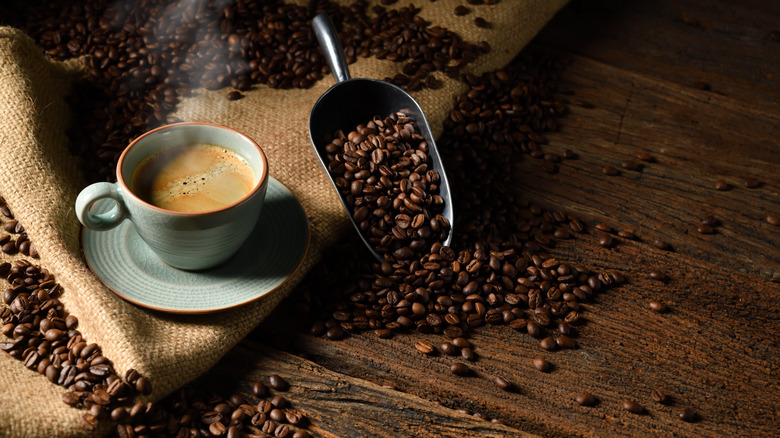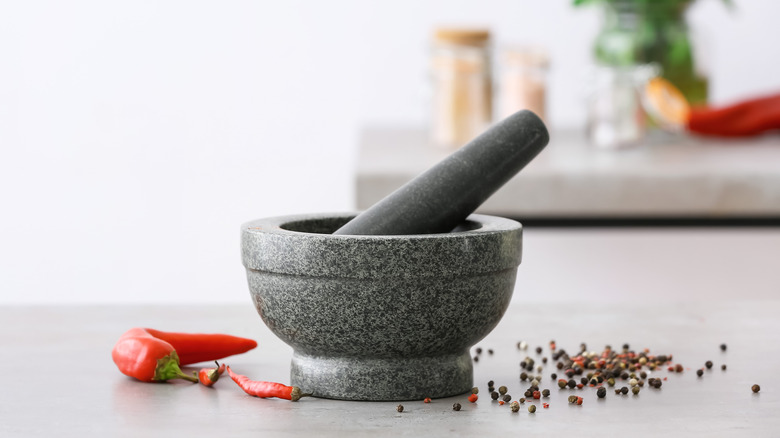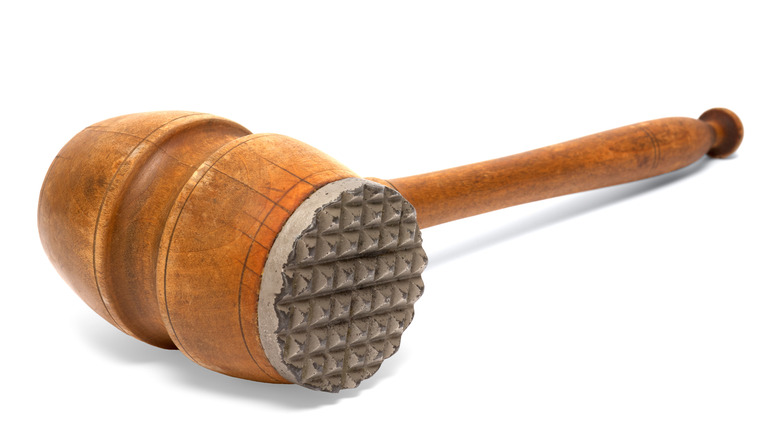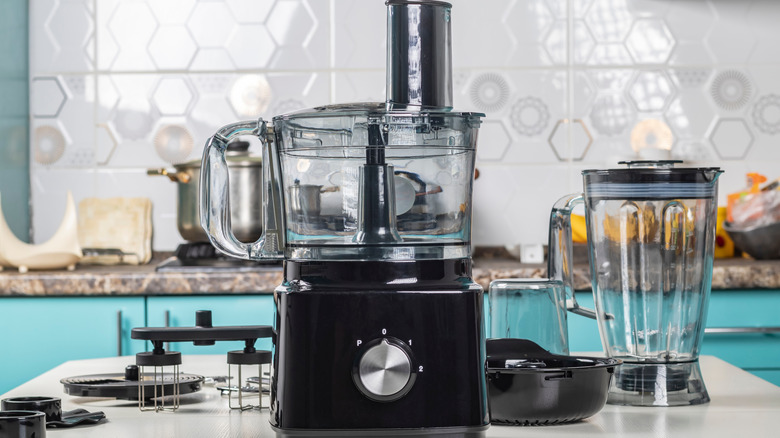How To Grind Coffee Without A Grinder
There's nothing like the aroma and rich flavor of freshly ground, roasted coffee beans. Releasing the bean's oils and flavors just before brewing — seeping or expressing them — results in a cup of pure liquid gold. Fortunately, you don't need expensive java gear to get that experience. It's still possible to bypass pre-ground beans by using a simple consumer-level grinder –– but in reality, you don't even need that to get perfect espresso.
Whether your kitchen lacks a proper coffee bean grinder, or you're traveling without access to the usual coffee-ritual paraphernalia, there are some pretty easy ways to compensate. Even without electricity on a camping or road trip, it doesn't have to be a quasi-emergency if you can access simple tools such as a mortal and pestle, rolling pin, or even a basic hammer from your tool kit. Aside from the manual-labor approach of crushing those precious caffeinated beans, you'll find that basic small kitchen appliances go a long way as well.
Control grinding with an old-fashioned mortar and pestle
To access the goodness in those whole roasted coffee beans, roll up your sleeves for some gentle crushing, rocking, and rolling. A mortar and pestle setup works for many culinary applications, including crushing whole spices, pounding garlic, and muddling fresh herbs. It's also one of the more efficient implements for grinding whole-roasted coffee beans. That's because the two separate pieces provide ultimate control over the size of your grind. They're typically made of stone or solid hardwoods, so there's no need to go easy on them. They've been used for thousands of years for that very reason.
The mortar, which is the bowl-shaped vessel, holds your coffee beans, and the oblong stick crushes and then refines them. Start by filling the mortar one-fourth to one-third full of roasted beans, then use the pestle to open them with a cursory crushing. Then continue to customize the crush based on whether you'll be using a French press, pour-over, brewing machine, espresso maker, or any number of coffeemaker options. Leave the grind more course for the French press method, or continue pressing with the pestle for a fine ground or powder to use in Moka pots, percolators, and even finer for concentrated espresso extraction.
Crush and press your way to java bean bliss
Rather than using a mortar and pestle, you can achieve similar results with a standard rolling pin from your kitchen –– but with less ability to control the outcome. You should still be able to get a medium or fine grind this way. A wooden mallet, meat tenderizer, or a wide, flat iron hammer will also do in a pinch, but get ready for some inevitable flying beans. For more control, try placing the beans in a baking pan with high sides before smashing them. Even better, for either of these methods, is to spread the beans out between two pieces of parchment paper, or enclose them entirely within a sturdy plastic freezer bag before rolling or crushing.
Another handy kitchen tool for cracking roasted coffee beans is a wide, high-quality stainless steel chef's knife. Place the beans on a solid surface, then lay the knife on top of them, and firmly press until the beans crack and begin to break down into a useable consistency. A cast iron pan could suffice as well, especially if need a good excuse to smash something to smithereens. Just place those little beans in some kind of bag first, and bang away on a sturdy wood surface rather than your pricey granite countertop.
Put small appliances to work in grinding coffee beans
With access to electricity and one of two small kitchen appliances, you can quickly make a cup of fresh-ground coffee without a dedicated coffee grinder. You only need a blender or a food processor — just note that these machines typically aren't designed for grinding, and doing so frequently may damage your blades and result in an uneven grind.
To grind whole coffee beans in a blender, simply pour them into the pitcher, preferably in small batches for even and consistent results. Using short bursts or the blender's grind or pulse feature, if available, grind the beans for three seconds at a time for a total of 30 seconds. Otherwise, the metal blades and heat can burn the beans and ruin your long-awaited cuppa Joe.
If there's a food processor at your disposal, by all means, use it. The typically wider container lets you prepare more beans at a time, allowing them to spread out for a predictable, even blend of ground goodness. You'll still need to work in batches and bursts, on and off, until you achieve the desired result. If necessary, stop and scrape the sides of the pitcher to loosen stray bits.




